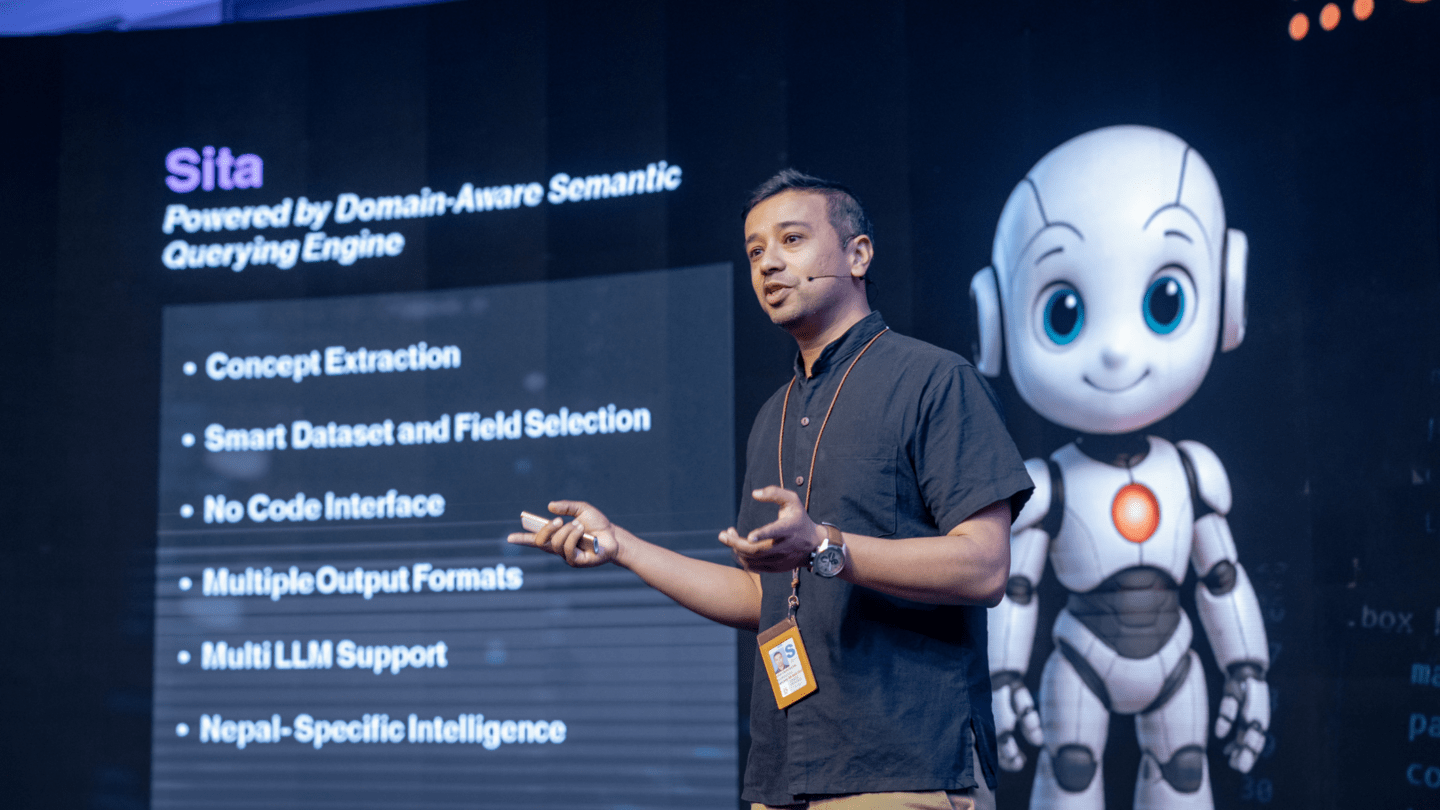What if getting insights from important surveys that inform policymaking in Nepal didn’t have to takemonths—or even years?
That was the question that sparked an ambitious pilot project by UNFPA in Nepal. The answer came in the form of SITA—a domain-aware AI platform that makes it possible to rapidly analyze national datasets and generate detailed, ready-to-use reports and briefs.
The AI system was unveiled to government officials in March this year and the launch showcased more than just another platform. It showcased a new way of generating data insights that shape national decisions—faster, smarter, and with fewer barriers.
For years, Nepal has collected some of the most comprehensive data in the region—through the Census, the Demographic and Health Survey, and more. But analyzing that data and transforming it into usable insights has often been slow and dependent on a small group of technical experts.
“We were facing a real bottleneck,” said Ashish Lamichhane, data specialist at UNFPA Nepal. “We had all this rich information but not enough time, people or money to dig into it. That meant missed opportunities—like not being able to feed crucial data into Nepal’s 16th development plan or the new National Population Policy.”
That bottleneck led to an idea: Could Artificial Intelligence help solve this?
UNFPA, in collaboration with the Ministry of Health and Population, UNFPA HQ’s IT Services Office, Google, and with support from the British Embassy Kathmandu, set out to test it.
After more than a year of development, SITA was born. Named after a symbol of wisdom and resilience in Nepali culture, SITA does something revolutionary—it allows users to type a simple question to explore insights from complex datasets, and the AI does the rest. Within seconds, it scans thousands of variables in massive datasets like the Nepal Demographic and Health Survey (NDHS), runs the analysis, and outputs polished charts, tables, and even written narratives that match human quality.
The results from the pilot shows 100% reproducibility of human coded analysis. It is estimated that there will be a 50% reduction in analysis time and 20% reduction in cost of large surveys. Any further analysis for the survey is estimated to cost 50% less.
“This is not just a technical innovation—it’s a strategic shift,” said Dr. Bikash Devkota, Secretary at the Ministry of Health and Population.
“For the first time, we have a system that can help us move from data to decision in real time. With fewer human resource constraints and growing urgency for data-driven action, AI tools like SITA can strengthen our institutions and improve the lives of people.”
The tool has already shown that it can do more than just summarize numbers. Early testing has provided promising potential for SITA to even conduct guided statistical tests . And as the technology evolves, more complex analyses—like machine learning—may soon be within reach.
SITA puts the power of national data into the hands of those who need it most. It allows governments, researchers, and even students to ask questions and get instant insights—without needing expensive software or advanced programming skills. This is about making data accessible, actionable, and inclusive.
The next step? UNFPA and its partners are working to scale the tool across government ministries, universities, and other sectors. With further investment in infrastructure, training, and local deployment, SITA could become a cornerstone of how Nepal makes decisions—helping the country unlock the full potential of its own data.


